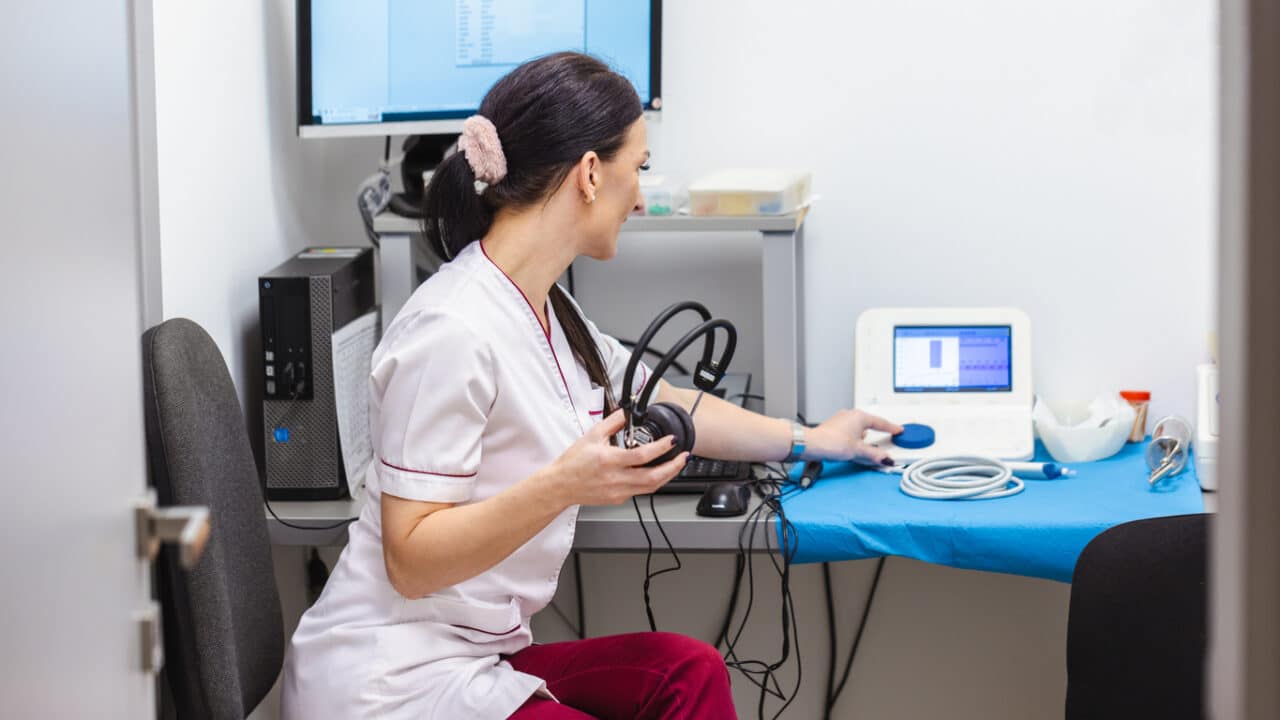More than 10% of people in the United States have some degree of hearing loss. If you struggle to hear the phone ring or understand the baristas at Bus Stop Coffee, it might be time for a hearing test. There are several different ways an audiologist will test your hearing. One of the most common is pure tone testing, where you listen to a series of beeps through headphones and signal when you hear them. You might remember doing this in elementary school.
Another important test, which might be less familiar, is speech testing. This test examines how well you can hear and repeat words or phrases.
How Is Speech Testing Done?

Speech testing is typically conducted in a quiet environment. While some methods vary, your speech testing might include one or more of the following:
- Speech reception threshold (SPR). An SPR test measures the quietest volume you can hear and understand speech. During the test, your audiologist will relay words through your headphones, and you will repeat them back.
- Word recognition test. A word recognition test measures your ability to understand speech at a comfortable listening level. During the test, your audiologist will present you with a list of words and ask you to repeat them to test the clarity of your hearing.
- Speech in noise test. Speech in noise tests measure how well you can identify and understand speech in the presence of background noise. During the test, the administrator will play simultaneous speech and background noise, and you will repeat the speech you understand.
Your audiologist will combine the results of your pure tone and speech tests to identify hearing loss.
What Do the Results Mean?
There are a few possible outcomes following pure tone and speech testing:
- Hearing loss. If you are diagnosed with hearing loss, your audiologist may recommend hearing aids. While hearing aids can’t cure hearing loss, they deliver amplified sound directly to your ears, allowing you to better understand the world around you.
- No hearing loss. If your results for both pure tone and speech testing are normal, you will likely not require any treatment.
- Auditory processing disorder. In some cases, pure tone testing may show normal hearing, while speech testing reveals difficulties in understanding speech. This condition is often identified as auditory processing disorder (APD), where the brain struggles to interpret auditory signals as it should. If you are diagnosed with APD, your audiologist may recommend speech therapy and coping strategies to help manage the condition.
Whatever the results of your pure tone and speech testing, our experts are here to help you every step of the way. Contact North Alabama ENT Associates today to make an appointment.